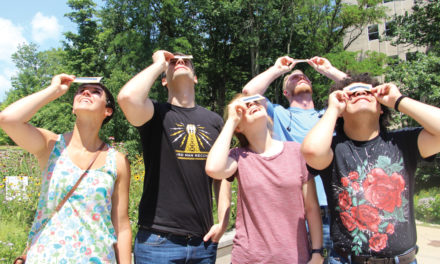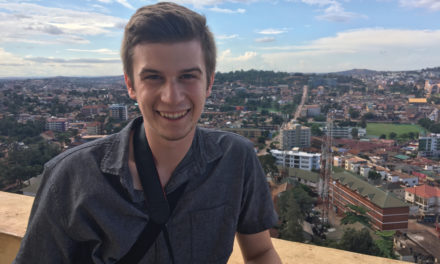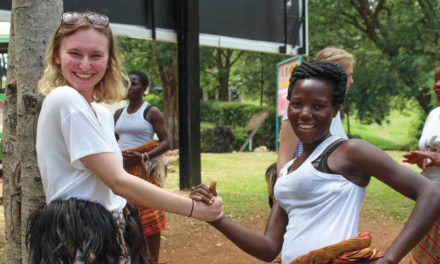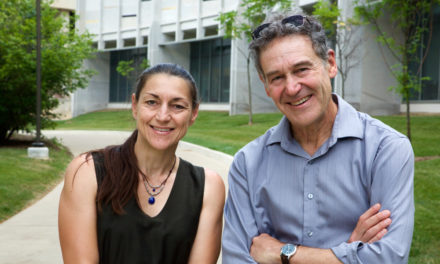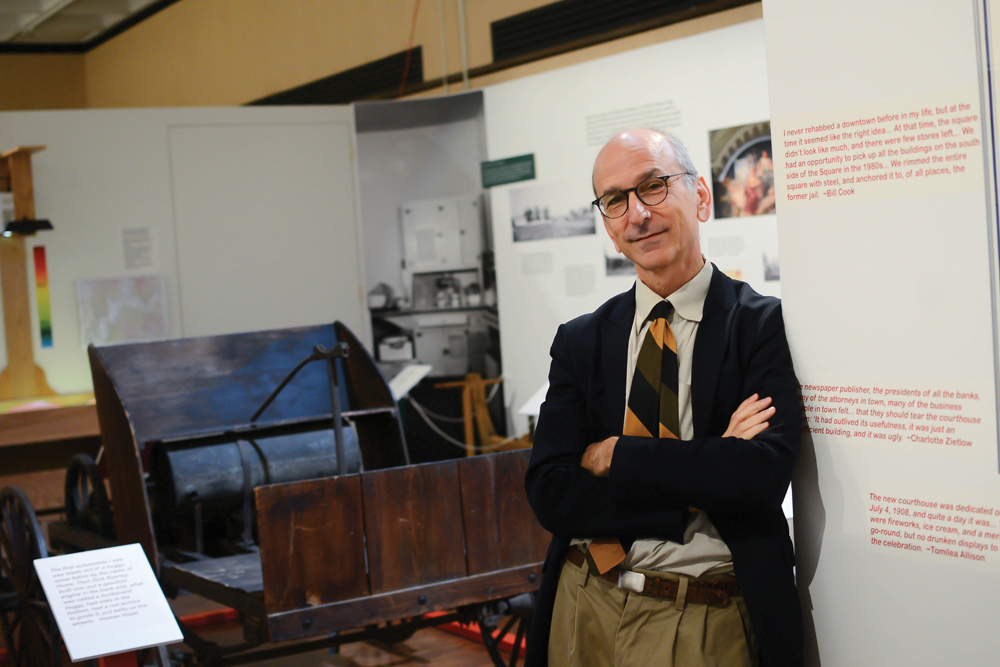
by ROSIE PIGA PIZZO
January 2018 marked the start of Bloomington’s bicentennial year, and in September, Indiana University kicked off a yearlong series of events celebrating its own 200 years. In honor of both occasions, the Mathers Museum of World Cultures has gathered materials that put an environmental spin on the history of the city and the university in an exhibit entitled “800 Seasons: Change and Continuity in Bloomington, 1818–2018.”
Sponsored by the IU Prepared for Environmental Change Grand Challenge Initiative, “800 Seasons” illustrates the interaction between the people and the land of Monroe County and how the basic needs of food, water, and shelter shaped the community.
“One exhibit [at the museum] is always the lead, and we ask ourselves, ‘What’s the big story this season?’” says Jason Jackson, director of the Mathers Museum, 416 N. Indiana Ave. “The bicentennial is a reflective moment of our history of Bloomington and the university.”
The beginning of the exhibit showcases T.C. Steele’s 1923 oil painting Early Spring on the Jordan. “We really wanted to start with big pieces that capture the feel of changing seasons as well as use original artwork,” says Eric Sandweiss, project lead and professor of history at IU.
“The focus is on the past but also the decisions that need to be made for the future of Bloomington,” Sandweiss says.
From there, 12 different displays, beginning with “Beneath Our Feet” and ending with “Now It’s Your Turn,” touch on the people and resources that shaped the city of Bloomington, from its earliest days to the present. For example, the “Scramble for Water” display includes a kinetic sand table designed by the Environmental Resilience Institute and the Indiana Geological & Water Survey. The display demonstrates why it was hard to sustain water in Bloomington.
Quotes from Bloomington citizens from the past and the present are a common thread throughout the exhibit. “We want people to feel like they’re swimming in a sea of voices, and we have artifacts to represent that,” Sandweiss says.
Near the end of the exhibit, current residents and their ideas about the city’s future are featured. “We asked people in the community what they will do to make Bloomington a better place,” Sandweiss says.
The Mathers Museum is open 9 a.m. to 4:30 p.m. Tuesday–Friday and 1–4:30 p.m. Saturday and Sunday. The exhibit runs through July 31, 2020. For more information, visit mathersmuseum.indiana.edu.


